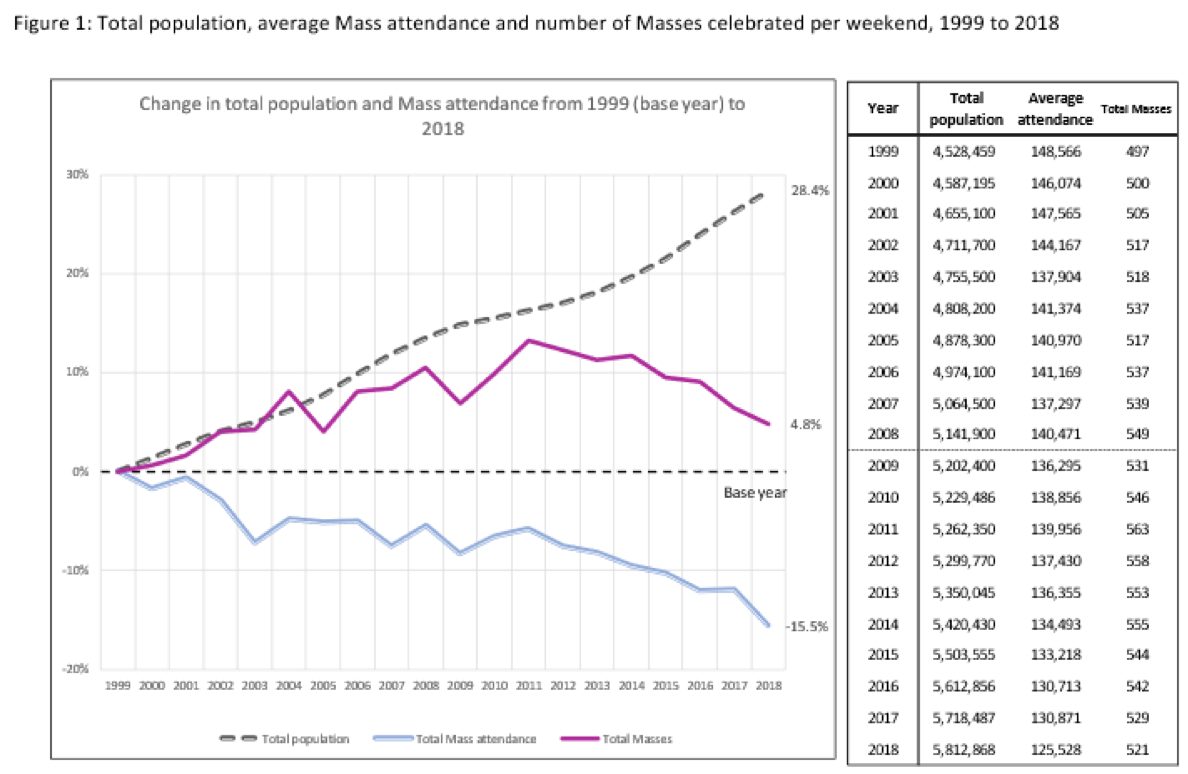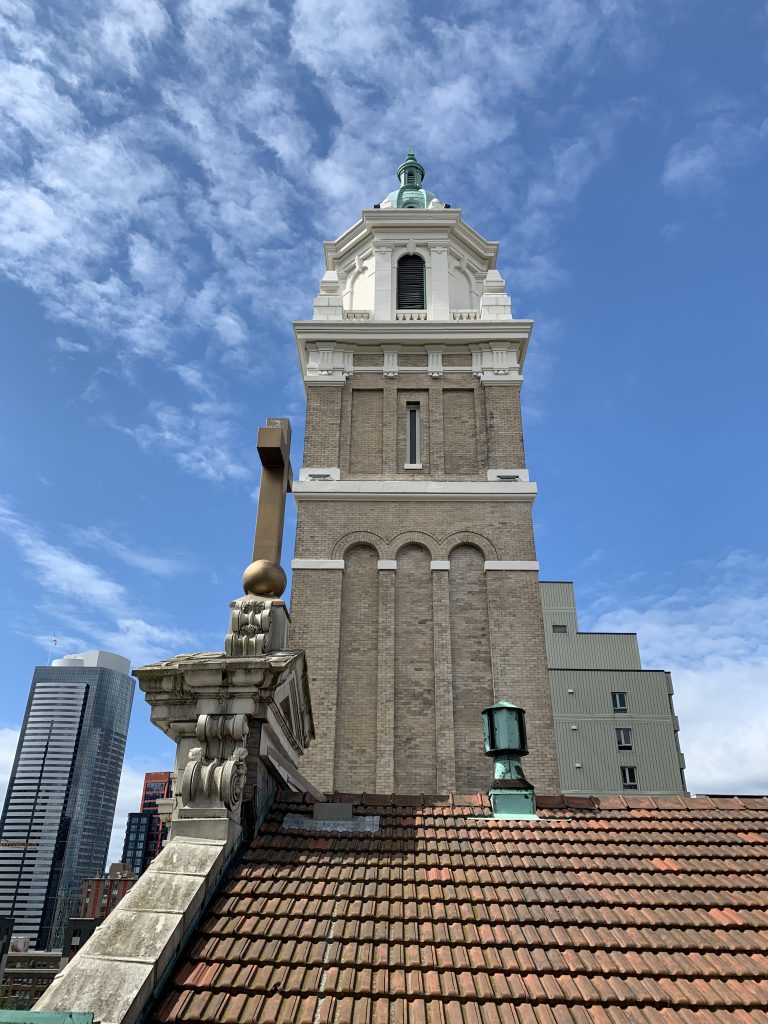Hopefully you are aware that the Archdiocese of Seattle is engaged in a strategic planning process. I’m happy to share the following information to help keep you informed of our progress. Please continue to keep this effort in your prayers that we may be sensitive to the promptings and guidance of the Holy Spirit.
I am extremely grateful to Bishop Mueggenborg and the planning committee members for the fine work. I know many others have been involved as well through consultation or behind the scenes compiling all the data. In the end, this effort is all about the People of God, not about structures. I pray we can all keep our eyes on that particular aspect as we move forward.
Please continue reading below or view and download the PDF.
Archdiocese of Seattle Enters New Phase of Strategic Planning
Strategic Planning Committee begins process to measure parish vitality
The Archdiocese of Seattle’s Strategic Planning Committee, led by Auxiliary Bishop Daniel Mueggenborg, has completed its first phase of strategic planning, focused on the key factors that influence parish life. The team built upon previous planning efforts and research to develop new standards for a consistent assessment across the archdiocese. Strategic planning is entering a new phase where the committee will begin to share these findings with parishes.
“Strategic planning has been underway in the archdiocese for decades, and I am so grateful to our pastors and parish leaders for their renewed effort to prepare for the future of our archdiocese,” said Archbishop Paul D. Etienne, who appointed Bishop Mueggenborg to lead strategic planning in February. Recognizing that these efforts require dedicated staffing, the archbishop also tapped Leigh Stringfellow to partner in leading the strategic planning process. Stringfellow brings years of archdiocesan experience from her longtime position with the Office of the Vicar for Clergy.
“The time has come for us to review the deanery strategic plans and implement changes that focus on Christ’s mission for the Church in Western Washington,” the archbishop said.
Archbishop Etienne pointed to Pope Francis’ call for a “pastoral conversion of the parish community” in an instruction issued this summer by the Vatican: “Since its inception, the Parish is envisioned as a response to a precise pastoral need, namely that of bringing the Gospel to the People through the proclamation of the faith and the celebration of the Sacraments. … If the Parish does not exude that spiritual dynamic of evangelization, it runs the risk of becoming self-referential and fossilized, offering experiences that are devoid of evangelical flavor and missionary drive, of interest only to small groups.”
“Strategic planning is an extensive process to examine the needs of Catholics and how to provide for them,” said Bishop Mueggenborg. “It’s about heeding the pope’s call for us to ‘read the signs of the time, while adapting both to the needs of the faithful and to historical changes.’”
Common Metrics
The Strategic Planning Committee saw a need to create a set of criteria that would be consistent across the archdiocese. This approach will ensure a wider understanding of parish health and provide a clear understanding of the key factors that help a parish flourish.
This effort began in 2019 with the Parish Vitality Task Force, which included clergy, lay parish leaders, parish staff, Catholic educators and chancery administrators. This task force explored a holistic view of a parish’s strengths and weaknesses in areas such as sacramental participation, the attraction and formation of disciples, community outreach, liturgical engagement, lay leadership participation and more. The Strategic Planning Committee will begin to use metrics developed by the Parish Vitality Task Force to create standard ways for every parish to review and assess their own vitality. In addition to these holistic metrics based on common criteria, the Strategic Planning Committee will also use a more robust tool, called the Parish Vitality Index (PVI), for planning when there is an urgent need.
“There is no single criteria to determine parish vitality,” said Bishop Mueggenborg. “We are looking at a composite of factors beyond finances, demographics and Mass attendance, including elements like faith formation, charity, local community charitable outreach and more to really understand the whole picture. By using a consistent set of criteria, we can identify symptoms of a fragile parish and offer all parishes a clear set of indicators that can potentially strengthen their mission effectiveness.”
Parishes in the Pierce Deanery will be the first to utilize the PVI for urgent strategic planning work, which accelerated after Holy Rosary Parish in Tacoma was determined to no longer be viable. The rest of the archdiocese will receive guidance on how to think through the metrics so that all parish communities can begin to assess strengths and opportunities for growth within their own ministries and pastoral efforts.
A History of Planning
Planning efforts have been ongoing over the past few decades, with most efforts taking place at the deanery level. The Archdiocese of Seattle consists of 10 deaneries, which act as neighborhoods of parishes, each led by an elected dean. The dean and pastoral leaders from each deanery come together regularly to discuss regional issues, share resources, plan, pray and provide support to each other. They also have an extensive process of consultation with parish leadership and parishioners. To better serve the faithful, deanery-led strategic planning work has resulted in opening and closing parishes over the past 25 years.
Parishes/missions that have closed:
- St. Urban (2005), former mission of Sacred Heart, Winlock
- St. Patrick, Dockton (2011), former mission of St. John Vianney, Vashon
- Sts. Peter and Paul, Aberdeen (2016)
- Sacred Heart, Winlock (2017)
- Our Lady of Lourdes, Wilkeson (2017)
- St. Joseph, Pe Ell; and Holy Family, Frances (2017), merged to form St. Joseph Parish at Holy Family, Frances
- Sacred Heart, Morton (2019)
Newly opened parishes:
- Holy Disciples, Puyallup (1996)
- Holy Redeemer, Vancouver (2000)
- St. Teresa of Calcutta, Woodinville (2004)
- Holy Innocents, Duvall (2004), former mission that became a parish
- Holy Cross, Lake Stevens (2004), former mission that became a parish
- North American Martyrs, Edmonds (2008)
- Christ Our Hope, Seattle (2009)
- St. Andrew Kim, Seattle (2010)
- St. Paul Chong Hasang, Fife (2010)
- Vietnamese Martyrs, Tukwila (2010)
- St. Joseph, Tacoma (2015), new community in pre-existing parish
Today’s Landscape
Similar to many American dioceses, the Church in Western Washington faces an ever-changing landscape that has affected parish communities. The traditional neighborhood parish serving local Catholic families has struggled to survive amid changing demographics, urbanization and other factors. While changing demographics have led to significant increases in Hispanic, Vietnamese and Korean Catholic participation, total Catholic population in the Archdiocese of Seattle is down. Additionally, there has been a decrease in Mass attendance (Figure 1, below), celebration of sacraments and new Catholic converts, resulting in a surplus of parishes across the archdiocese.
“We have to face today’s reality and recognize that the way our archdiocese was structured 100, 50 or even 20 years ago is less effective now than in the past,” said Bishop Mueggenborg. “We must have the courage to change to become a stronger Catholic Church that provides excellent pastoral care for its faithful and effectively serves the mission of Jesus Christ.”
Using archdiocesan data along with the deanery recommendations and vitality data from each parish, the Strategic Planning Committee will begin assessing areas of strength and weakness across the archdiocese. When opportunities for change emerge, the Strategic Planning Committee will partner with the dean, pastoral leaders and the faithful to forge a new path for a parish or group of parishes.
“We must not forget the power of prayer in this process,” said Bishop Mueggenborg. “We will rely on the Holy Spirit to guide us on this journey.”
Members of the Strategic Planning Committee
- Father Paul Magnano (Northern Deanery)
- Father David Young (Olympic Deanery)
- Father Vince Gilmore (Snohomish Deanery)
- Father Philip Raether (North Seattle Deanery)
- Father Michael Ryan (South Seattle Deanery)
- Father Todd Strange (Eastside Deanery)
- Father Timothy Ilgen (South Sound Deanery)
- Father James Northrop (South King Deanery)
- Father Jerry Burns (Pierce Deanery)
- Father Bryan Ochs (Southern Deanery)
- Father Gary Lazzeroni (Southern Deanery)
- Leigh Stringfellow (Planning & Mission Effectiveness)
- Father Bryan Dolejsi (Vocations)
- Kristin Dixon (Catholic Schools)
- Tim Hunt (Planning & Mission Effectiveness)
- Maria Laughlin (South Seattle Planning)
Consultors
- Mary Santi (Canon Law/HR)
- Scott Bader (Parish Finances)
- Joe Schick (Archdiocesan Finances)
- Ed Foster (Property)
- Helen McClenahan (Communications)
- Father Brad Hagelin (Vicar for Charities)
- Father Gary Zender (Vicar for Clergy)
